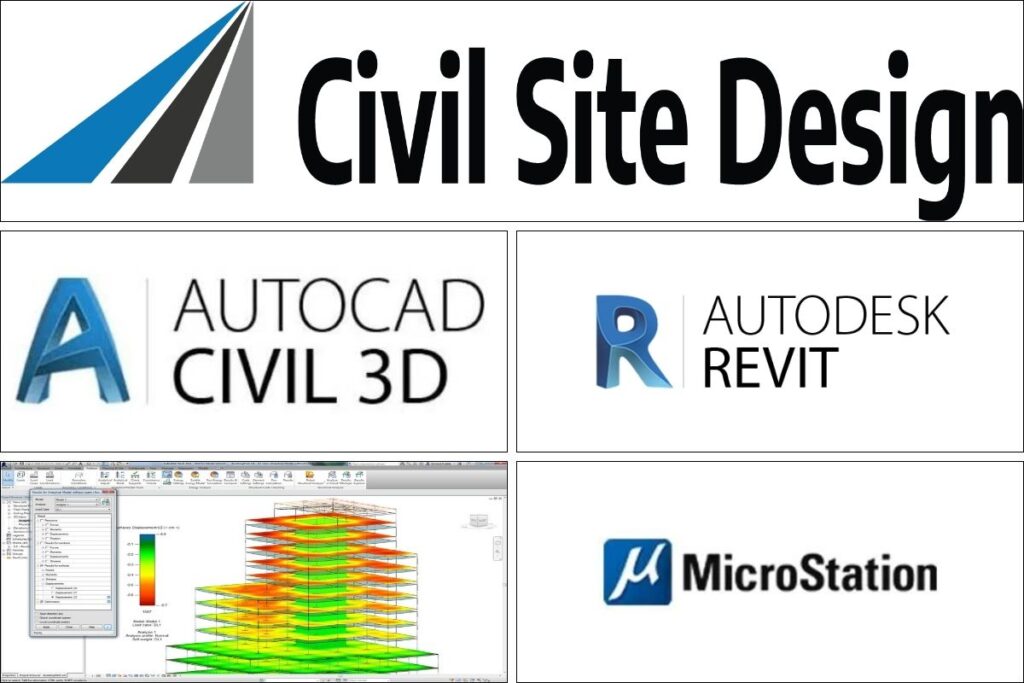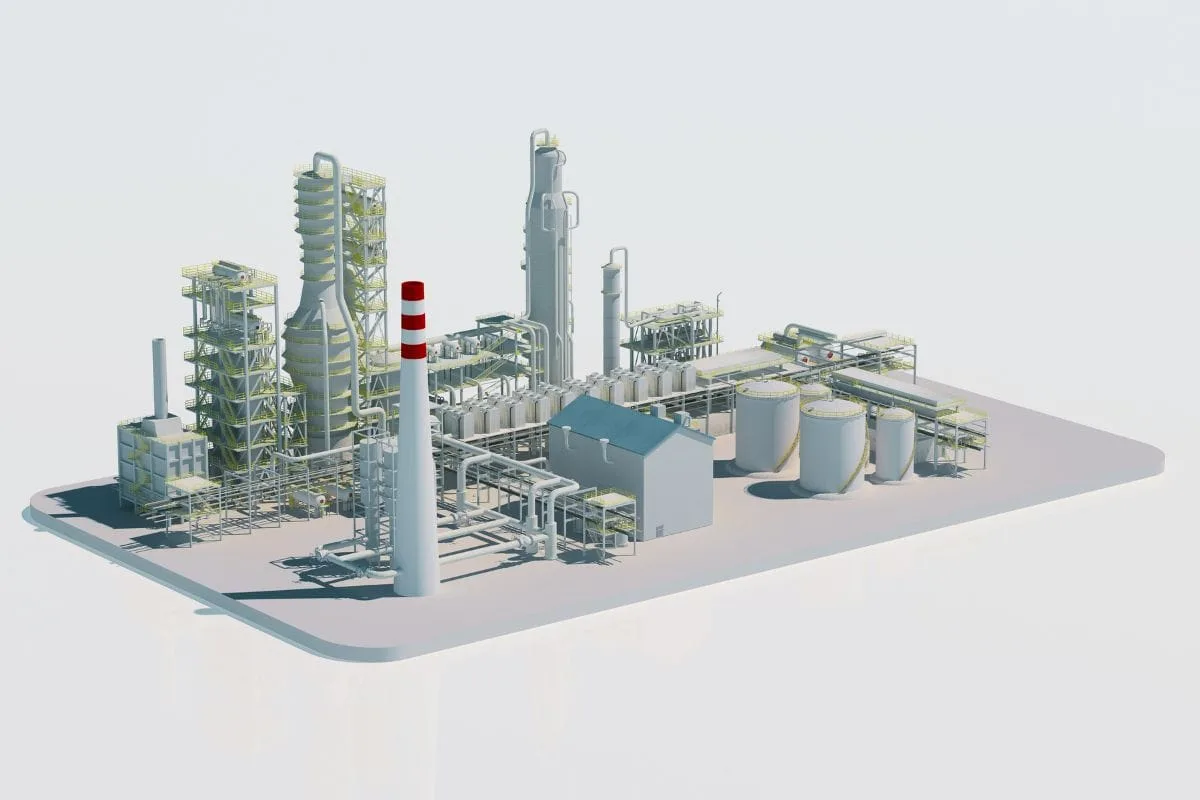What is BIM in Construction Industry

- BY Dhiren
- September 28, 2024
- Read in 8 Minutes
Building Information Modeling (BIM) is a cutting-edge technology used in the construction industry to streamline project design, planning, and execution. It involves creating a detailed 3D digital representation of a building, which integrates Architectural, Structural, Mechanical, Electrical, and Plumbing (MEP) data.
This comprehensive BIM Model in Construction industry helps stakeholders visualize the entire project, improving collaboration between Architects, Engineers, and Contractors.
BIM enables early detection of design conflicts, reducing costly errors and delays during construction. Building Information Modeling in the Construction Industry supports precise cost estimation, material management, and scheduling, leading to more efficient project delivery.
Moreover, BIM promotes sustainability by analyzing energy performance and minimizing waste throughout the building’s lifecycle.
In short, BIM enhances project accuracy, reduces risks, and improves communication, making it an essential tool for delivering high-quality, cost-effective, and timely construction management projects.
Its adoption transforms how buildings are designed, constructed, and maintained in the modern construction industry.
Also Read, Milwaukee County Plans New Uses for Former Milwaukee Public Museum Building
BIM and Construction Management
Building Information Modeling (BIM) is essential in modern construction management by enhancing project planning, coordination, and execution.
BIM provides a digital representation of a building’s physical and functional characteristics, allowing construction managers to visualize, analyze, and manage all project phases from concept to completion.
By integrating 3D models with real-time data, BIM for construction managers helps to improve communication and collaboration among architects, engineers, and contractors.
This results in better decision-making, early detection of design clashes, and reduced errors during construction.
BIM also supports efficient resource management, offering accurate cost estimation, material take-offs, and construction timelines.
This guarantees that projects are completed on time and within budget. Additionally, BIM aids in risk mitigation by allowing the simulation of different construction scenarios, leading to safer and more effective project outcomes.
BIM in Lean Construction
Building Information Modeling (BIM) is crucial in Lean Construction, a methodology focused on reducing waste, optimizing resources, and increasing efficiency.
By integrating BIM into Lean practices, construction teams can streamline workflows, minimize errors, and improve project delivery.
BIM provides a digital 3D model that enables real-time collaboration among all stakeholders, allowing them to visualize the entire project before construction begins.
This leads to better coordination, early detection of design conflicts, and reduced rework, which are core goals of Lean Construction.
Also Read, How to Create a Personal Budget Plan
Benefits of BIM in Construction Management for Civil Engineers
For several reasons, BIM is widely used in construction management by numerous civil engineers. Here are the main advantages of BIM for civil engineers:
1. Design Constructability
3D models, the foundation of BIM, are advantageous during the building process, particularly when planning complicated structures. It allows you to examine the final design and choose the most effective way to build a project.
Any possible conflicts between components can be found even before the building phase. To accomplish the objectives of a building project, BIM also enables you to effectively design site logistics, such as temporary storage space for equipment, supplies, support structures, and cranes.
To identify the most practical answer, you might examine various options. With all of this knowledge, you may save time and money by avoiding the need for redesign or revision during the building phase.
2. Scheduling and Sequencing of Construction
In the construction sector, BIM designs projects more than merely digitally. The planning and building process can also be virtually simulated.
This will enable you to investigate various choices before the commencement of work and assist in determining the most effective building sequence.
You can choose the timeline for each construction task and produce an accurate construction schedule by using BIM in construction management.
3. Estimates of Project Costs
All critical project information, such as building materials, products, performance requirements, and environmental impact, is included in the 3D model created with BIM.
Cost estimating is now simpler, faster, and more accurate because the contractors are not obliged to perform a drawn-out, time-consuming exercise to compute material quantities (to prepare a quantity report).
4. Off-site Construction and Prefabrication
The construction industry makes extensive use of prefabrication and modular construction. They speed up construction, reduce wasteful material use, enhance project quality, and manage labor expenses.
The prefabrication option becomes feasible with a well-thought-out approach during the design process.
The BIM model can be utilized as an information source in the automated manufacturing process and to develop shop drawings for prefabrication.
5. Finalization and Transfer Procedure
As-built drawings don’t need to be updated when using BIM! Using BIM, you can keep an accurate and up-to-date record of the building process.
You can centralize and make the information easily accessible to all stakeholders by updating the information in the BIM model as the construction project progresses.
The BIM model can conduct operations, maintenance, and refurbishment work throughout the project life cycle.
Civil Engineers use Popular BIM Softwares for Construction Management

Various BIM software programs are used by civil engineers to design and construct various infrastructure projects, including utilities, roads, tunnels, and bridges. The top five BIM programs utilized by civil engineers are listed below:
1. AutoCAD Civil 3D
AutoCAD 3D is a BIM software for civil engineering design and documentation that was created by Autodesk. You can use the software to plan, evaluate, and record initiatives related to transportation, environmental protection, and land development.
2. Revit
Revit is frequently used for architectural and building design, but with a few modifications and add-ons, it may also be utilized for civil engineering work. For civil engineers, Revit can be enhanced with some civil-specific extensions, such as GRAITEC Advance PowerPack and RISA-Revit.
3. Infrastructure
Infraworks is software created by Autodesk specifically for use by civil engineers and other construction industry experts. It enables you to evaluate and visualize design ideas about the built and natural environments.
4. The Bentley Microstation
MicroStation is a BIM software for civil engineers and infrastructure projects that is provided by Bentley Systems.
With the use of computer-aided design (CAD) software, you may create 2D and 3D infrastructure drawings, document your design purpose effectively, and provide the most dependable solution.
5. Civil Site Design
An Autodesk-approved developer, Civil Survey Solutions, created the civil engineering design and documentation software known as Civil Site Design.
It offers tools for surface modeling, highway design, pipe design, site grading, land development, and road reconstruction.
Career Options for Civil Engineers with BIM Skills
It is now necessary for civil engineers to acquire BIM abilities because BIM has opened up a wide range of career opportunities in the field.
These occupations encompass a variety of civil engineering positions, including those involving the use of BIM in construction industry projects. Here are several job opportunities in the building business that need using BIM:
1. BIM Manager or BIM Coordinator
The BIM manager or coordinator manages the entire BIM process and makes sure that various project teams work well together.
In addition, he handles the scheduling of project maintenance, data interchange, modeling, and dispute settlement. Creating BIM workflows and protocols is another task for a BIM coordinator or manager.
2. BIM Technician/Modeller
Design and engineering papers are used to produce 3D models by a BIM modeller/technician. He makes certain that the systems, materials, and parts of the project are accurately represented. Along with working with engineers and architects, a BIM modeller integrates design modifications into the project’s design.
3. A BIM Specialist
By combining technical skills with BIM information in a virtual model, a BIM engineer maximizes the performance and efficiency of building systems.
He collaborates closely with the construction and design teams. In addition, he is responsible for producing documentation and clash reports, as well as analyzing and resolving conflicts inside the BIM model.
4. BIM Project Manager
A BIM project manager uses BIM to particular projects and works with stakeholders to guarantee that standards are fulfilled, data is handled efficiently, and the project’s goals are realized.
In addition, he has to supervise the documents pertaining to BIM and keep an eye on the project’s progress.
5. BIM Specialist
Visualization, collision detection, and sustainability analysis are among the specializations of a BIM specialist. His job is to provide the best possible project results and improve the BIM process.
He also develops and manages discipline-specific models in addition to collaborating with other experts.
In summary
The way civil engineers approach and carry out projects has been completely transformed by BIM. There are many advantages of using BIM in construction management, including increased productivity, increased project accuracy, and better teamwork. BIM helps with everything, from better project management to more efficient project design!
The capacity of civil engineers has also increased, and new possibilities for innovation have been made possible by the availability of specialized BIM software.
Civil engineers can benefit greatly from BIM software such as Revit, Infraworks, AutoCAD Civil 3D, and Bentley MicroStation. These programs have grown to be dependable allies in the pursuit of more effectively designed, sustainable, and efficiently carried out infrastructure projects.
BIM-versed civil engineers will lead the AEC (Architecture, Engineering, and Construction) sector in providing safer, quicker, and more affordable solutions as technology develops.
More employment options for civil engineers will arise with BIM as the cornerstone, assisting them in establishing a lucrative career in the industry.
Also Read, Houston Maritime Attorney: Your Guide to Legal Expertise





